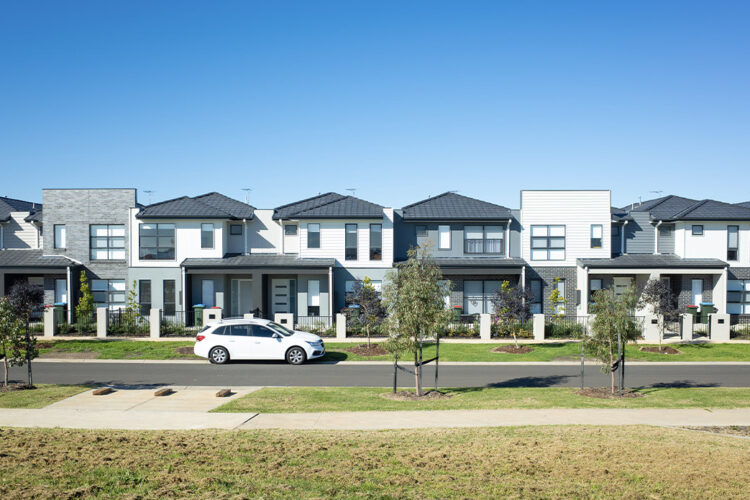Domain’s new report has suggested house prices will be at a record new high in Sydney, Adelaide, and Perth in FY24 if its forecasts eventuate.
The property marketplace has released its Forecast Report for the 2023–24 financial year, in which it has revealed what to expect in the Australian housing market over the next 12 months. The report also provided anticipated price percentage changes for house and unit prices across capital cities and regional areas.
According to the report, Australia’s housing market will be in a position to steadily recover over the coming financial year, with select capital cities anticipated to fully recover from the 2022 downturn.
Indeed, if Domain’s forecast prices eventuate, house prices will reach new record highs in Sydney, Adelaide, and Perth.
Unit prices could also reach a new record high in Brisbane, Adelaide, and Hobart.
Anticipated record new highs in prices
Domain has forecast that Sydney house prices could grow by 6 to 9 per cent by the end of FY24. If this eventuates, prices will be at a new record high, the report said.
“This growth range means the median will fall between $1.62 million and $1.66 million, surpassing the previous $1.59 million peak in March 2022,” the report said.
The 2022 downturn was the steepest Sydney had ever experienced – short and sharp – with house prices falling 9.6 per cent from peak to trough over three consecutive quarters (although it was not the largest peak-to-trough decline).
The report said the recovery will be steady in comparison, taking roughly six quarters of growth to recoup the three quarters of price declines.
Sydney unit prices are forecast to grow by 2 to 5 per cent, meaning it will have a slow but steady recovery over the next financial year, according to Domain.
Adelaide house prices will also be at a new record high by the end of FY24 if the forecast growth of 2 to 5 per cent eventuates.
This means the median house price will fall between $873,000 and $861,000, illustrating the continued strength, the report said.
“Between now and the end of FY24, Adelaide’s median house price will surpass $800,000 for the first time. The city avoided a price downturn during 2022 and early 2023, as acutely seen in the more expensive capital cities such as Sydney, Canberra and Brisbane,” the report stated.
“If our forecast holds, Adelaide could avoid any material downturn in house prices and instead have a period of subdued growth compared to the boom time of the previous few years.”
Similarly, Perth house prices will reach a new record high at the end of the next financial year if the forecast growth of 1 to 3 per cent eventuates, according to Domain.
House prices to gallop ahead of unit prices
House prices across the combined capital cities are projected to grow by 2 to 4 per cent, while units are forecast to grow by 1 to 3 per cent.
House prices are predicted to grow by up to 2 per cent in Melbourne, between 1 to 4 per cent in Brisbane, between 3 to 5 per cent in Hobart, and between 2 to 4 per cent in Canberra.
Unit prices across the combined capitals are projected to grow by 1 to 2 per cent in the upcoming financial year, with prices expected to be at a new record high in Brisbane and Adelaide and close to a new record high in Hobart.
However, unit prices will be more volatile than houses in Canberra, with price falls expected before the city sees a recovery.
While Sydney will experience a slow but steady recovery in unit prices over the upcoming financial year and prices will sit below the record high achieved in December 2021, prices in Melbourne will be more volatile if the forecast decline of 2 per cent to positive growth of 1 per cent materialises.
Regional Australia to slow down post-COVID-19
There was significant growth in regional areas during the COVID-19 pandemic due to demand for lifestyle locations and additional space, as well as accelerated demographic shifts as many residents made sea and tree changes, particularly in regional NSW, Victoria, and south-east Queensland.
However, Domain’s report has forecast that future trends will revert to historical movements that show less growth in regional areas than in cities.
Indeed, the focus will return to the combined capitals (led by Sydney), while a slower pace of growth is expected in combined regional house and unit prices.
The combined regional house price is predicted to rise by 1 to 3 per cent while unit prices are expected to rise by a modest 0 to 2 per cent in the next financial year.
In regional NSW there is a forecast decline of 1 per cent to positive growth of 1 per cent in house prices, while unit prices are predicted to grow by 1 to 3 per cent.
House prices could grow by 3 to 4 per cent in regional Queensland and by 2 to 4 per cent in the Gold Coast over the 2023–24 financial year, according to Domain.
Population pressures
Commenting on the data, Domain’s chief of research and economics, Dr Nicola Powell, said population pressures will be one of the major factors driving up housing demand and prices over the next 12 months.
“Australia has seen an exponential increase in temporary and permanent migration since the international border reopened in late 2021 to alleviate skills shortages,” Dr Powell said.
“Of course, unlike natural population growth, those arriving from overseas aren’t already housed. This puts us in a position where in the next financial year alone, nearly 130,000 extra dwellings will be needed, with the Eastern Seaboard receiving the largest share of migrants.”
Coupled with this, she added, “unprecedented headwinds” in the construction industry and unseasonably weak listings have contributed to a forecast of continued tight housing supply that increases market competition.
“While prices are expected to rise, affordability will contain the pace of growth, as the likes of rapidly rising interest rates and ongoing mortgage serviceability challenges continue to play out in a complex and dynamic market,” Dr Powell said.
In the past, migration policy has pushed migrants who are willing to live in regional areas for extra points and increased chances of getting a permanent visa, the report noted.
However, with changes anticipated to the migration system, Dr Powell said there is speculation that the streamlined channels of overseas migration to regional locations may be overturned, which could reduce demand flows.
“That being said, with housing affordability remaining a significant barrier in our largest capital cities, demand will likely remain from younger home buyers who seek affordable regional markets, particularly those within close proximity to a major city or employment hub,” the report said.
If you’re looking to refinance for a better rate or are looking for the right rate for your clients at zero cost, contact Finni Mortgages’ experts and let us do the hard work for you.


